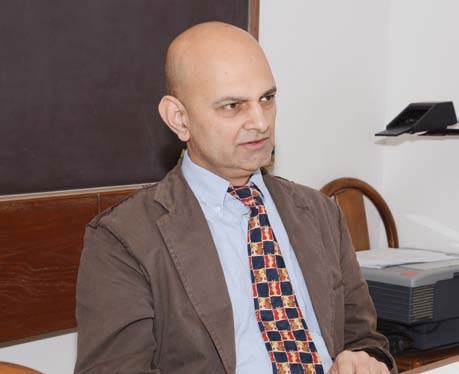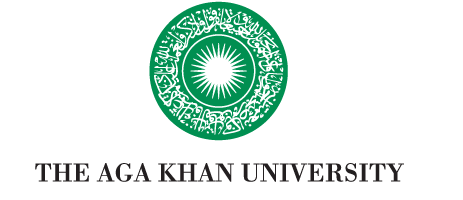Dr Khalid Saeed Khan, MBBS' 88

Dr
Khalid Saeed Khan, MBBS ’88 is currently Professor of Women’s Health
and Clinical Epidemiology at the Centre for Primary Care and Public
Health, Barts and The London School of Medicine. His academic expertise
is in patient-oriented health research and medical education. Dr Khalid
has published over 200 peer reviewed journal articles making
contributions in systematic reviews, trials of treatments and tests,
health technology assessments and evaluation of educational methods.
Tell us about your early days?
It was 1983 and AKU had commenced
its first medical school class. I moved from Multan to join AKU, one of
50 who had taken the plunge to risk it with a new, promising
institution. It was a belief in a brighter future that led us here. In
fact, AKU hadn’t even opened its doors and classes were in rented space
at the College of Physicians and Surgeons, Pakistan. We graduated on
time in 1988. At our graduation ceremony, there were a number of people
from the Aga Khan Hospital (AKH) in Nairobi, including Dr Kehar Singh,
the Head of Obstetrics and Gynaecology there. I had always been
interested in working in Africa and the opportunity was too good to
miss. So I made an arrangement with Mr Shamsh Kassim-Lakha and Dr Javaid
Rizvi, the Head of Obstetrics and Gynaecology here in Karachi, to go
and spend a year at AKH in Nairobi before coming back here. I was the
first graduate from the Medical College, Pakistan to go spend the first
year of my residency there.
In the past in Pakistan, there have been a lot of societal
barriers for male students going into obstetrics and gynaecology. Why
did you prefer this field over others?
I was inspired by my
teachers. Dr Javaid Rizvi, my professor in the Medical College, inspired
a lot of students to train in this field. One could see that there was a
role for people with expertise regardless of their gender. Secondly,
the Medical College experience encouraged enquiry. So, together these
motives combined into a career track that involved clinical training and
learning about research methods. At the end of my residency, I went for
an MSc in Health Research Methodology at the Faculty of Health
Sciences, McMaster University from 1994-95, partly funded by the Aga
Khan Foundation. This is where I discovered the place for a clinical
academic career pathway. Thirdly, the fact that maternal mortality was
alarmingly high is an eye opener for any doctor. At AKU, we spent 20 per
cent of our time doing community health sciences. So we were inspired
by the need to do more than just look after the patients in the
hospital. This was a strong influence and I have ever since been
concerned about not just accepting things on face value but rather
questioning opinions and then trying to figure out the facts through
research wherever possible.
What was your future course of action?
After
McMaster, I went to the UK in 1995, did a couple of years of clinical
and research training, and then became a National Health Service
Consultant Obstetrician and Gynaecologist, a post I enjoyed for around
five years. In the UK, people focusing on delivering services are
employed by the hospital and those focusing on teaching and research are
employed by the university. This is a good way to increase synergy
between a hospital and university. In 2005, I became a Professor of
Obstetrics and Gynaecology at University of Birmingham. In 2010, I moved
to Barts and the London School of Medicine and Dentistry, which was
formed following the merger of the Medical Colleges of St Bartholomew’s
Hospital and the London Hospital.
Your expertise lies in patient- oriented health research. What is your stance on this?
Patient-oriented
health research is about research activity that directly impacts
patient care, not just publications in journals. Also termed as applied
research, its intention is to benefit patients and the public through
projects that directly inform practice and policy. Nowadays, research
funding focuses on this because investment in science should change the
outcomes for people and society. This is what excites me most.
For
example, recently we researched pulse oximetry, a very simple test done
on newborns to find out the oxygenation level of their blood. Studying
nearly 20,000 babies, we established that this test provides accurate
screening and is helpful in discovering congenital heart diseases. It is
now being incorporated into standard clinical policy across the world,
including USA, Scandinavia and UK.
Has any of your research project involved AKUH, Nairobi?
I’ve
collaborated in discovering the causes that lead to higher rate of
stillbirths or deaths of babies during pregnancy. We found that one of
the most important factors was the distance between where the mother
lives and the nearest health facility. The farther away a mother lives
from a health facility, the higher her chances of a complication. The
reason being that expecting mothers will either not seek care or they’ll
seek care too late. So the solutions
to health problems might come
from outside the medical box, say by developing a taxi service that is
available 24/7 for transport to healthcare facilities.
How are you involved with your alma mater?
I’m
conducting workshops with the Department of Surgery at the University
Hospital in Karachi on how to do systematic reviews, a cost-effective
type of research that synthesises evidence and is fruitful in generating
information relevant for local clinical practice. We have also had an
AKUH resident visiting our hospital in Britain to train in maternal
medicine.
As the main author of Systematic Reviews to Support Evidence-Based Medicine, what is your argument in it?
It’s
a very successful book in evidence-based medicine that has been around
for nearly six years. It won the British Medical Association Medical
Book award. Its second edition was translated and published in English
and German. The main attraction of this book is its usefulness for
clinicians who aren’t researchers and for students who are new to
research. It carries lots of worked examples to show its readers how
research can be used to improve or change practice. It takes a decade
for effective interventions to be embedded in practice. Things need to
be speeded up and evidence based findings need to be utilized more
rapidly. This book provides clinicians tools with which to make rapid
progress in incorporating evidence into practice.

